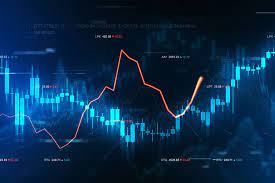In today’s fast-paced world, traders need a trading platform that is secure, flexible, and accessible from anywhere. mt4 webtrader offers all of these features and more, making it the go-to choice for traders around the globe. Let’s take a closer look at why MT4 WebTrader is the ultimate trading platform.
Secure Trading
Security is a top priority when it comes to online trading. MT4 WebTrader uses advanced encryption technology to ensure that all transactions are safe and secure. This means that traders can focus on their trades without worrying about their personal information or funds being compromised.
Flexible Features
MT4 WebTrader offers a wide range of features that cater to different trading styles and strategies. From customizable charts and indicators to automated trading options, MT4 has something for every trader. Additionally, MT4 allows users to access multiple accounts simultaneously, making it easier for those who manage multiple portfolios.
Accessible Anytime, Anywhere
One of the biggest advantages of MT4 WebTrader is its accessibility. As long as you have an internet connection and a web browser, you can access your account from any device – whether it’s your desktop computer or mobile phone. This means you can monitor your trades and make decisions on-the-go without being tied down to a specific location or device.
User-Friendly Interface
MT4 WebTrader has an intuitive interface that makes it easy for both beginners and experienced traders to navigate through the platform seamlessly. The user-friendly design allows users to quickly find what they need without any confusion or hassle.
Conclusion:
In conclusion, MT4 WebTrader offers everything a trader needs in one convenient package – security, flexibility, accessibility, and user-friendliness. With its advanced features and constant updates based on market trends and customer feedbacks,Mt 5Webtrader is the ultimate trading platform for traders on the go. So, whether you are a beginner or an experienced trader, MT4 WebTrader is definitely worth considering for your trading needs.

